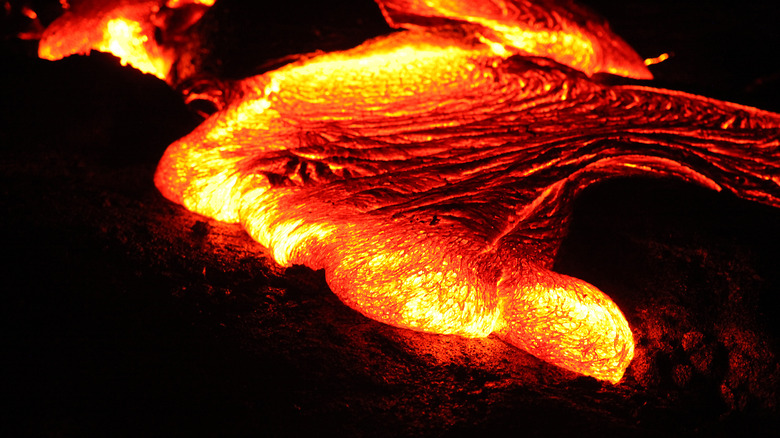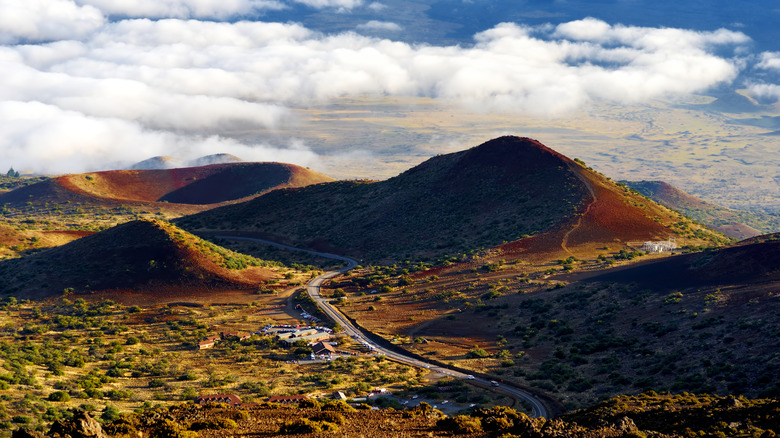The Truth About The World's Largest Active Volcano
When it comes to volcanoes, Hawaii's Mauna Loa is the undisputed champion when it comes to both size and activity. Located on the "Big Island," per the United States Geographical Survey, Mauna Loa rises 13,100 feet above sea level while its flanks go to the floor of the ocean to 16,400 feet and there depresses the sea floor an additional 26,200 feet. This means the volcano's summit is a massive 55,700 feet from its base. Mauna Loa means "long island," and its length is as impressive as its height, with the above ground portion of the volcano extending 74 miles from the southern tip of Hawaii to Mauna Loa's caldera, or depression at its summit from which lava erupts, and east-northeast to the city of Hilo's coastline. It's the largest volcano on Earth.
Mauna Loa is also one of the world's most active volcanoes. People observed and noted its first eruption in 1843, and its gigantic lava flows have reached the ocean eight times since 1868. The number of eruptions total 33, with an average of five years between each eruption. Its last eruption took place in 1984, and the lava came within 4.5 miles of Hilo. Mauna Loa is fully expected to erupt again, and particularly since its lava flow is so prolific, scientists carefully monitor its activity to get plenty of advance warning in order to keep Hawaii residents safe.
Still the world's largest volcano after a brief challenge
Mauna Loa briefly lost its title of world's largest volcano in 2013 when, as reported by National Geographic, a team of scientists announced that the designation actually belonged to Tamu Massif, an extinct shield volcano on the seafloor east of Japan that covers 100,000 square miles. Shield volcanoes, as defined by the British Geological Society, are volcanoes with gently sloping sides caused by lava with low viscosity. Mauna Loa is also a shield volcano. In 2019, a team led by William Sager, the lead scientist in the study that proposed Tamu Massif as the world's largest volcano, reevaluated the original findings and determined that Tamu Massif wasn't a shield volcano at all, but rather "a colossal collection of 19-mile-thick oceanic crust." This is still quite amazing, as it's four times thicker than the global average for ocean crust and the reasons for its existence are still unclear, but it's no volcano and so Mauna Loa recaptured the title of world's largest.
The year 2019 was a significant one for Mauna Loa. In addition to the Tamu Massif discovery, the Hawaiian Volcano Observatory raised Mauna Loa's alert level from GREEN/NORMAL to YELLOW/ADVISORY. Per Forbes, the alert was updated thanks to some new surface deformation and seismic activity; it had been at this level in early 2018 as well and isn't cause for panic. The volcano likely wouldn't erupt without warning, and its level could stay at YELLOW/ADVISORY for years (it's still there as of this writing).

